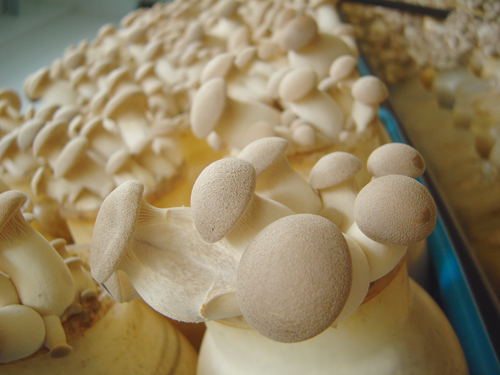
Okay, let’s TiVo back. In the last issue (Vol. 5.6) we talked about the organic approach to growing grapes and making wine. Seems the revolution has started, being spurred on by the awesome demand for organic products. According to statistics compiled by the national Organic Trade Association, sales of organic products have increased an average of nearly 21 percent each year over the past decade. By 2008, annual sales are expected to reach $30.7 billion – an amazing jump from the relative chump change of $1.5 billion per year in the early 1990s. Today, hundreds of natural products are readily available at supermarkets and grocery stores, “organic” is the buzzword on the Food Network, and the organic fare is often found on menus at fine restaurants nationwide. By definition, the term “organic” refers to a farming system that promotes and enhances biodiversity, biological cycles, and soil activity. It’s based on minimal use of off-farm inputs (i.e., chemicals) as well as management practices that restore, maintain, and respect all-natural living systems. Northern California has become a prime location for what foodies now refer to as “organic penetration.” Early in the 1970s, the seeds of this trend were planted by Chef Alice Waters, at Chez Panisse, who began working directly with organic farmers. Waters has written a number of cookbooks on the topic and more recently has become director of The Edible Schoolyard, an outreach program that teaches elementary school students how to grow, cultivate, cook and eat fresh veggies and fruit. And that’s the secret to Tucker’s style of energetic, contemporary cuisine: the freshness of the produce. As seasons change, so do the items featured on the menu. In winter, specialties include exotic mushrooms and hearty root vegetables. In spring, it’s young, fresh produce. And in summer and fall, emphasis is on locally grown herbs, ripe melons, heirloom tomatoes, and other offerings that’ll last until the end of harvest. From Table to Terroir If you follow the ecological approach to farming, you know the mantra is to give more than you take away. But here’s a new idea: use recycled restaurant food scraps to make better wine. At the Olivet Grange Vineyard in California’s Russian River Valley, winemaker Kathleen Inman, of Inman Family Wines, treats her vines to a four-course gourmet compost. Produced by Jepson Prairie Organics, this concoction is made from fish bones, oyster shells, vegetable cuttings, melon peels, broccoli stems and other recyclable material – all sourced from some of the best restaurants in the Bay Area. Near the small town of Graton, CA, Winemaker Merry Edwards and husband Ken Coopersmith have teamed up with Gourmet Mushroom, Inc. The company produces a special organic mulch consisting of mushroom mycelium (dried fungi), ground oak shavings, corncobs, and basic mill material made from grain husks. This unique natural mulch is so clean and powerful that it immediately saturates the soil. The vines love it, and the result is the arduous task of controlling their growth. There’s nothing magic or secret about this mixture. It simply kicks the vines in the ass and tells them to start working. Prior to working in the wine industry, Coppersmith cultivated citrus fruit with his family in California’s Imperial Valley. “Throughout my experience in commercial farming over the years, I never saw better results than when I began farming organically,” Coopersmith says. “It’s truly mind-boggling how this approach helps grapevines.” “It’s pretty simple,” says Susan Sokol Blosser, “Our goal is to apply organics to everything that we do!” “People that love food and wine are constantly looking for new flavor sensations,” Tucker explains. “What we’re doing at Millennium is evidence that the organic movement is not a fad. It’s here to stay.” “Our goal is to make sure the vines are happy,” Inman notes. “It’s all about doing the right thing – working with nature instead of against it.” |




